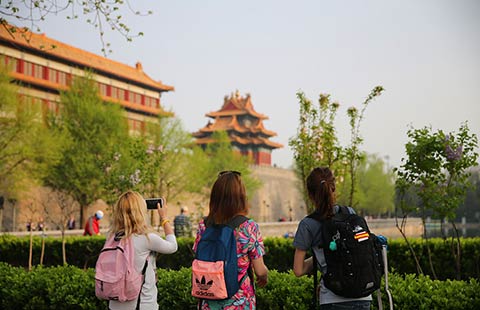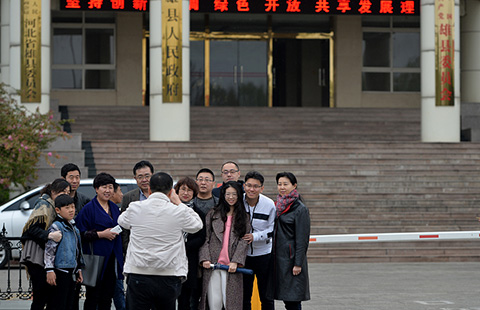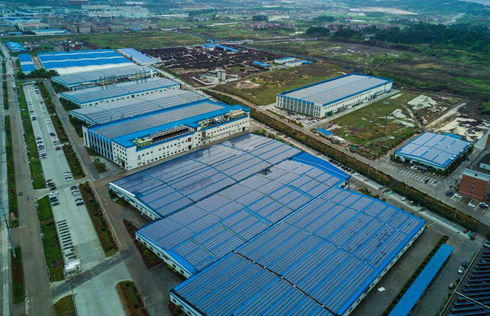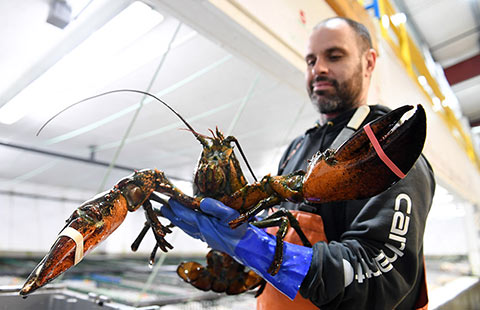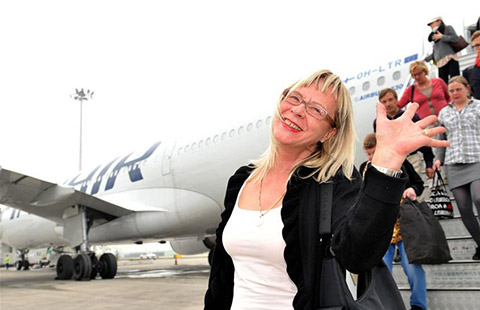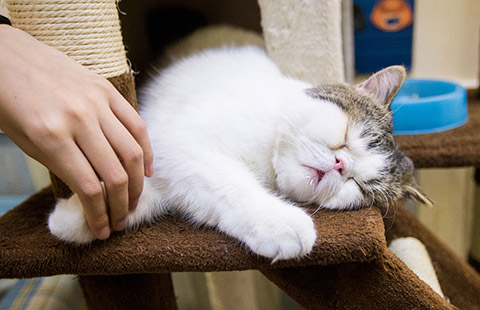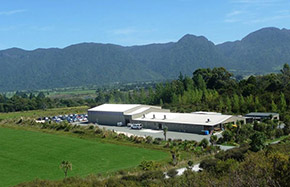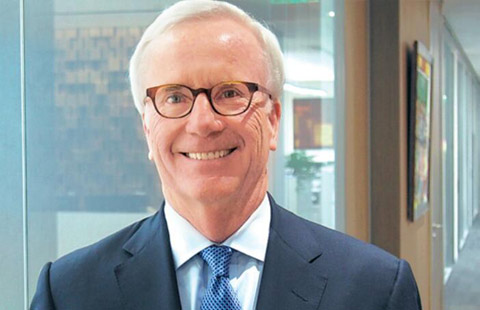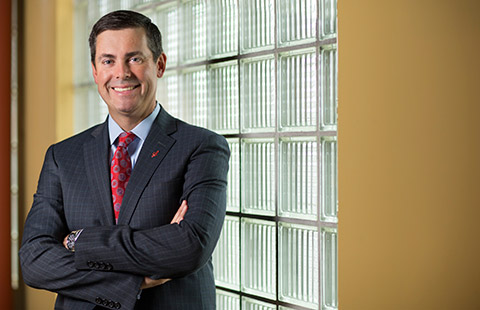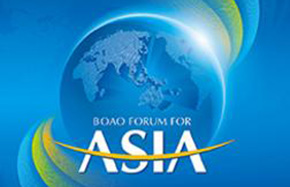China emerges as next global medical tourism hotspot
HAIKOU — Svetlana Shipetko and her two sons did not just come to South China's tropical island of Hainan to escape the freezing Siberian weather.
Shipetko had an equally important goal -- to ease her lower back pain.
Instead of prescribing painkillers, Shipetko's Chinese doctor Tang Yi performed the traditional Chinese therapy of "tuina," which literally means "push-and-pinch."
Every morning, Shipetko received the therapy at the Sanya Hospital of Traditional Chinese Medicine, then spent the rest of the day bathing in the sun.
"It is great," she told Xinhua through an interpreter. "No pills, no injections, but I feel much better."
Shipetko is one of tens of thousands of Russians who flock to Hainan every year. The island province has received 800,000 Russian tourists in the past seven years.
Almost 80 percent of them tried some form of traditional Chinese therapy during their stay -- either to treat a particular ailment or simply for wellness, health authorities said.
Rooted in ancient Chinese philosophy, traditional Chinese medicine (TCM) has in recent years gained popularity in a world dominated by modern Western medicine.
Clinics have proliferated outside of China, but many face challenges such as getting herbs across the border or luring experienced professionals to work overseas.
As a result, more foreigners are coming to China for TCM treatment or therapy.
The boom is particularly felt in Sanya, where Russian-language advertisements for acupuncture pop up across the city.
Global flow of patients
International medical tourism became popular in the mid-20th century with wealthy European and North American patients traveling abroad for cosmetic surgery sprees.
In the markets that first responded to the demand, such as Brazil, South Africa, and Costa Rica, a variety of modestly priced procedures were offered.
The sector flourished with the rise of quality health care, commercial aviation, and the internet. It is now a multi-billion-dollar industry.
US-based industry resource company Patients Beyond Borders estimates between 9.8 million and 14.8 million patients visited overseas hospitals and clinics in 2016.
People are tempted by lower costs, quality care, improved patient experience, specialty treatments, and the lure of "the new and different," according to the company.
It said that in 2013 alone, more than 900,000 Americans headed overseas for "nearly every imaginable type" of medical treatment: weight loss surgery in Mexico, heart valve replacements in Thailand, hip resurfacing in India, and fertility treatments in Israel.
In Asia, Thailand, Malaysia, Singapore, and the Republic of Korea are the rising stars, drawing a great majority of patients within the region.
"We see a rising market in China," said Patients Beyond Borders CEO Josef Woodman in an e-mail interview.
He said China can successfully compete with mature markets in the region, as it is strong in TCM treatment and its health care infrastructure is fast improving.
Beyond cups and needles
Acupuncture, cupping, tuina massage, and herbal medicine are some of the best-known TCM treatments overseas, but TCM master Prof. Hu Kaiwen believes the ancient healing system has even more to offer.
Hu, president of Dongfang Hospital in downtown Beijing, is a veteran oncologist who specializes in integrating TCM with conventional Western medicine to treat advanced tumor patients.
While Western medicine sees cancer as abnormal cells to be annihilated, TCM considers the ailment a sign of imbalance of body and mind and prioritizes restoring balance rather than annihilation.
Hu said one Chinese philosophical saying applies: "Going beyond the limit is as bad as falling short."
His therapy combines minimally invasive surgery with post-surgery TCM care. It offers an alternative to patients who do not respond well to chemotherapy or radiation.
Hu said the herbs can work just as well to lengthen the lifespan and improve quality of life, but cost only a fraction of costly targeted Western drugs.
Wang Tiansong, president of Sanya Hospital of Traditional Chinese Medicine, said foreign patients with cerebral palsy and strokes have also responded well to TCM treatment.
Last year, Beijing University of Traditional Chinese Medicine set up a Chinese medicine center in St Petersburg as an outpost.
"TCM is centered around being green and natural, making it compatible with Russians' passion for nature," said the center's Chinese director Wang Chaoyang.
Infrastructure, promotion
Hainan is not the only spot where foreign medical travelers swarm.
In China's Northwest Xinjiang Uygur autonomous region, the Russians are joined by Kazakhs and other Central Asians from across the border.
At the Sixth Affiliated Hospital of Xinjiang Medical University in Urumqi, signs are written in three languages -- Chinese, Uygur, and Russian. About 80 foreigners sought treatment in the first three months after the hospital opened its international department.
Wu Yue, a top hospital official, said the demand from across the border is so strong that the hospital plans to start building an Asian Orthopedic Center.
These developments have been incorporated into the Belt and Road Initiative the Chinese leadership proposed in 2013. Xinjiang has positioned itself as a regional hub that offers services to the region, including health care.
Meanwhile, Hainan, once a key stop on the ancient Maritime Silk Road, is already being marketed as an international tourist island.
Investors now set their eyes on medical infrastructure.
A public-private-partnership cancer hospital, which cost 2.9 billion yuan ($426 million), opened last year in Hainan's capital city of Haikou. Equipped with state-of-the-art facilities and 1,200 beds, the hospital mainly targets wealthy treatment seekers from outside the province.
China's State Administration of Traditional Chinese Medicine and the National Development and Reform Commission late last year set a target to build 10 TCM health tourism model zones offering medical treatment, wellness, recuperation, and elder care by 2020.
Woodman said China is on the path to establishing quality health care infrastructure. In 2007, there were only three Chinese medical centers accredited by the Joint Commission International, while today there are more than 77.
The next step, he said, will be to work toward promoting China as a medical tourism destination by working with the travel and economic development sectors.
Some have sensed the business opportunity.
Russian national Yana recently quit her tour guide job to join the Sanya Hospital of Traditional Chinese Medicine as a marketing officer.
Yana, who has been a tour guide in Sanya for 12 years, said her new job is promising.
"A lot of my Russian clients know about TCM and are interested in coming over," she said.






